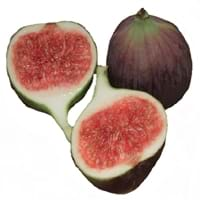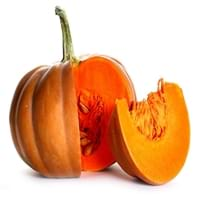Health Benefits
Cancer prevention, Controls blood pressure, Heart care, Increase in haemoglobin, Prevents constipation, Prevents macular degeneration, Reduces nervous tension
Arthritis treatment, Cancer prevention, High Cholesterol Regulation, Lower blood pressure, Helps Prevent cataract, Prevents gall stones, Ulcer treatment, Weight loss properties
General Benefits
Controls blood pressure, Helps in weight loss, Maintains healthy cholesterol level, Strengthens bones
Boosts respiratory health, Eliminate parasites and infections, Protects against birth defects, Strengthens bones
Skin Benefits
Brightens and lightens complexion, Hydrates skin, Skin rejuvenation, Treatment of acne
Heals sunburn, Hydrates skin, Skin rejuvenation
Hair Benefits
Good conditioner, Regulates hair growth, Softening mask
Regulates hair growth
Allergy Symptoms
Abdominal pains, Anaphylaxis, Coughing, Headaches, Hives, Itching, Nasal congestion, Skin rash, Sneezing, Sore throat, Swelling of hands
Abdominal cramps, Anaphylaxis, Digestive Problems, Dizziness, Eczema, Fainting, Hives, Inflammation, Itching, Tingling sensation in wrist and face, Vomiting, Wheezing
Side Effects
Allergic reaction, Skin rash, Possibly unsafe during pregnancy
Kidney and gallbladder diseases
Best Time to Eat
Best if taken as a breakfast (or empty stomach), Don't consume at night and before bed, Morning time (before lunch)
Along with meal, Don't eat after meal, Morning time (before lunch)
Vitamin B5 (Pantothenic Acid)
Vitamin C (Ascorbic Acid)
Vitamin K (Phyllochinone)
Calories in Fresh Fruit with Peel
Calories in Fresh Fruit without Peel
Not Available
Calories in Frozen Form
Not Available
Calories in Dried Form
Not Available
Season
Summer, Winter
All seasons
Varieties
Abyad, Adriatic, Alma, Atreano, Bataglia, Black Bethlehem, Black Madeira, Black Mission, Brown Turkey, Sierra, Calimyrna, Kadota, Deanna, Figoin and Hardy Chicago Fig
Jarrahdale, Peanut, Lakota, Cow, Sugar, Caribean, Red kuri, Buttercup and Pink lady
Color
Green, Purple, Red
Blue, Green, Orange, Red, White
Inside Color
Pink
Creamy Yellow
Taste
Sweet
Creamy, Soft, Sweet
Origin
Western Asia
Mexico
Soil Type
Clay, Limestone, Loam, Sandy
Clay loam, Sandy loam, Well-drained
Climatic Conditions
Dry, Warm
Warm to hot climate
Facts about
- Fig tree is considered as a symbol of abundance, fertility and sweetness.
- The fig is made up of 55% of natural sugar so they are the sweetest fruits.
- Figs are used as a fat substitute in recipes.
- The name pumpkin has its roots in the Greek word ‘pepon’, meaning ‘large melon’.
- The largest pumpkin ever grown weighed 1,140 pounds.
- Pumpkins were once known for removing freckles & curing snake bites.
Top Producer
Turkey
China
Other Countries
Albania, Algeria, Brazil, Egypt, Iran, Morocco, Syria, Tunisia, United States of America
Egypt, India, Indonesia, Iran, Italy, Mexico, Russia, Spain, United States of America
Top Importer
France
United States of America
Top Exporter
Turkey
China
Botanical Name
Ficus carica
Cucurbita maxima
Synonym
Not Available
Cucurbita pepo, Squash
Subkingdom
Tracheobionta
Tracheobionta
Division
Magnoliophyta
Magnoliophyta
Class
Magnoliopsida
Magnoliopsida
Subclass
Alismidae
Dillenhidae
Order
Rosales
Cucurbitales
Family
Moraceae
Cucurbitaceae
Species
Ficus carica
Cucurbita mixta
Generic Group
Mulberry
Not Available
Difference Between Fig and Pumpkin
We might think that Fig and Pumpkin are similar with respect to nutritional value and health benefits. But the nutrient content of both fruits is different. Fig and Pumpkin Facts such as their taste, shape, color, and size are also distinct. The difference between Fig and Pumpkin is explained here.
The amount of calories in 100 gm of fresh Fig and Pumpkin with peel is 74.00 kcal and 26.00 kcal and the amount of calories without peel is Not Available and 30.00 kcal respectively. Thus, Fig and Pumpkin belong to and category.These fruits might or might not differ with respect to their scientific classification. The order of Fig and Pumpkin is Rosales and Cucurbitales respectively. Fig belongs to Moraceae family and Pumpkin belongs to Cucurbitaceae family. Fig belongs to Ficus genus of Ficus carica species and Pumpkin belongs to Cucurbita genus of Cucurbita mixta species. Beings plants, both fruits belong to Plantae Kingdom.









